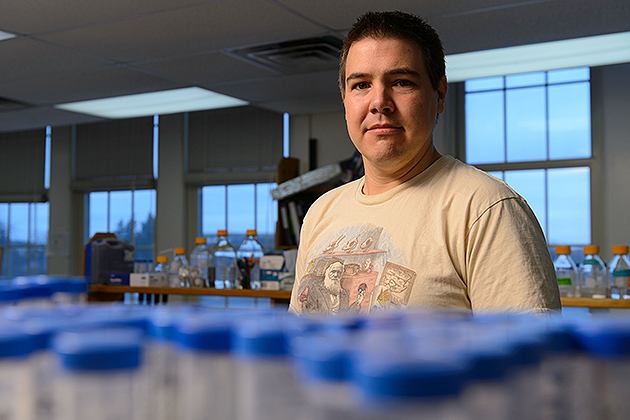According to the Centers for Disease Control, nearly 3 of every 100 babies in the U.S. are born with a birth defect. Among boys, one of the most common defects is the displacement of the urethral opening in the penis, a condition called hypospadias.

UConn researcher Andrew Pask, an associate professor of molecular and cell biology, was recently awarded a five-year, $1.75 million grant from the National Institutes of Health to investigate how this abnormality appears in developing fetuses, in hopes of preventing its tragic consequences.
“It is the single most common human birth defect that we see,” says Pask. “Every instance will require a surgical intervention.”
Because the repair of hypospadias requires surgery, records of its incidence have been kept for many years. “The disturbing thing about hypospadias is that it has increased in incidence by 50 percent in the last 40 years,” Pask notes.
The cause of hypospadias and the reason for its increasing appearance are a mystery, but Pask’s recent discovery may lead to answers. Pask found a breed of mutant mice at the Baylor College of Medicine’s mouse collection that produces male offspring with severe hypospadias. Analyzing its genes, he discovered a mutation in a gene which codes for a long ribonucleic acid (RNA) that is essential for normal urethral closure and opening placement.
There are other mice with defects in genital development, but Pask’s mouse has new characteristics (its “phenotype”). “What’s unique about our [mutation] is that it is only affecting urethral closure, the rest of our mouse is completely normal,” he says. “This is a much more discrete phenotype.” That means the researcher can focus directly on the cause of hypospadias.
Pask’s studies indicate that the RNA interacts with an ephrin protein. Ephrin proteins are important in many fetal development pathways including those involving tissue closure, as in the urethra and the oral palate.
The DNA encoding this long, non-coding RNA is surrounded by sites controlling RNA production that respond to the sex hormones estrogen and androgen. This suggests that production of this RNA is an important step in hormonal control of genital development.
Chemicals that mimic sex hormones might affect the production of this essential RNA – chemicals like those increasingly found in the environment from industrial and agricultural processes. This might explain why the incidence of hypospadias has increased recently in developed countries. A mother’s exposure to such chemicals might affect the developing male fetus in the two weeks critical to the urethral closure process. “So you have to be exposed in that very narrow window to have an effect,” Pask explains.
Pask has his work cut out for him. “It is clear that [the developmental pathway] is going to be extremely complex,” he says. His mouse breed is a unique tool to reveal the genes involved in the urethral development pathway. “We are hoping that we can use it as a tool to figure out what these genes are down the cascade and how they are responding to estrogen.”



